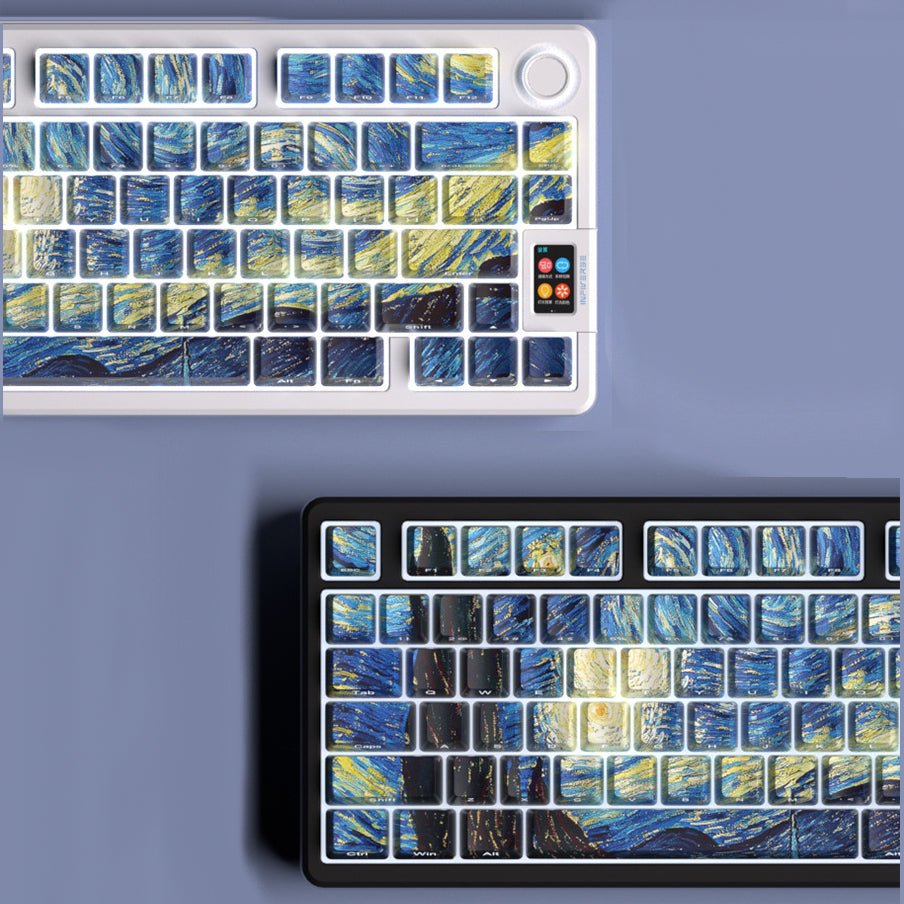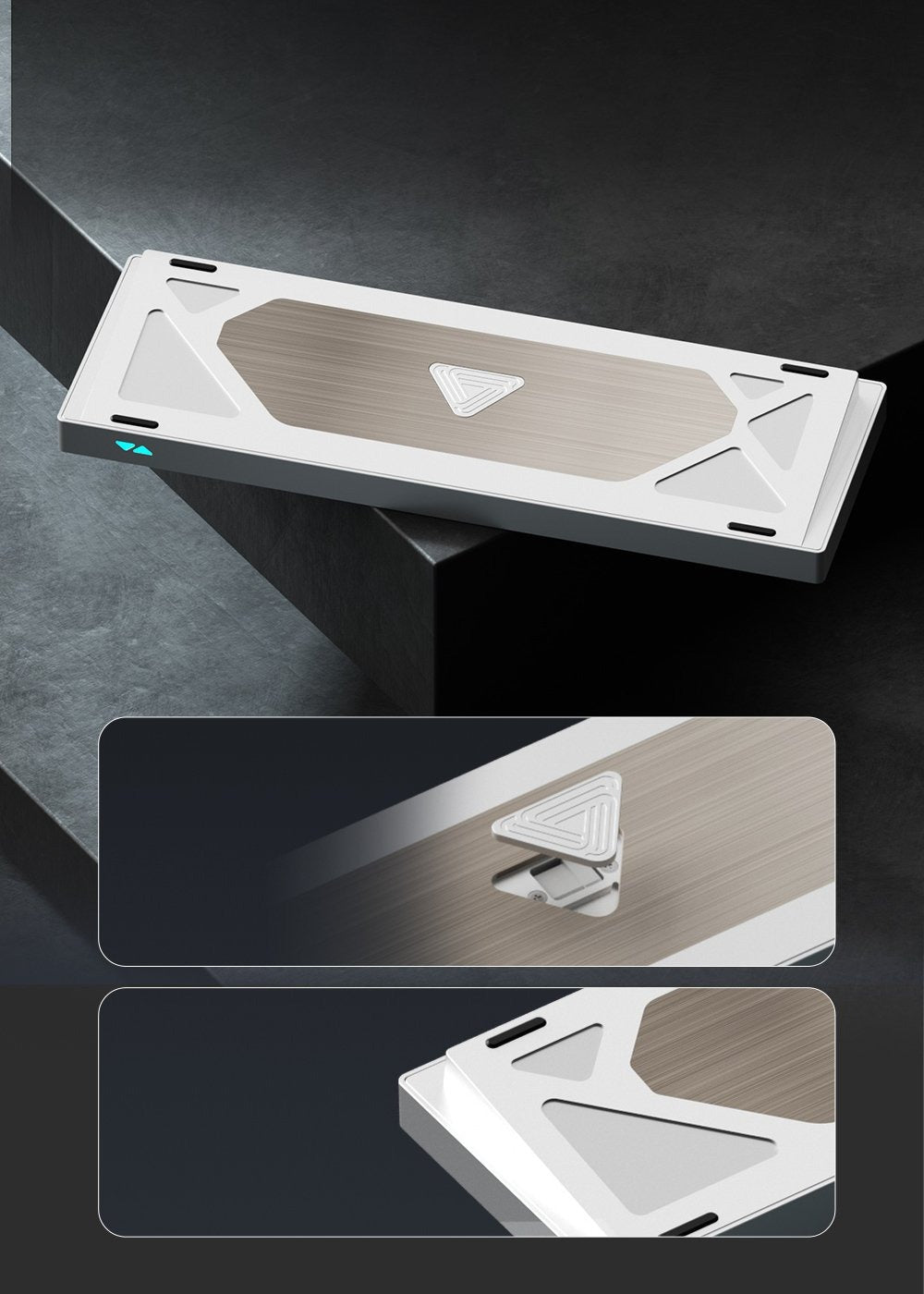When it comes to customizing your mechanical keyboard, there are many factors to consider—switch type, keycap material, layout, and aesthetics, just to name a few. However, one element that can greatly affect your typing experience, yet often goes underappreciated, is keycap thickness.
Keycap thickness is not just about how heavy or lightweight a keycap feels—it also influences your keyboard's sound profile, typing comfort, and overall durability. In this blog, we’ll explore how keycap thickness can change the way your keyboard feels and sounds, and how it affects its long-term reliability.
The Basics of Keycap Thickness
Keycaps come in a range of thicknesses, and this can vary depending on the material, design, and manufacturing process. Typically, keycaps fall into two main categories based on thickness:
- Thin Keycaps – Usually around 1.2mm to 1.4mm thick, these keycaps are more lightweight and often found on budget or standard keyboards.
- Thick Keycaps – Typically ranging from 1.5mm to 2mm or more, these keycaps are commonly associated with premium keyboards and are often made from more durable materials like PBT (Polybutylene Terephthalate).
The thickness of a keycap can directly impact several key factors of your typing experience, including feel, sound, and durability. Let's break these down.
1. Feel: Comfort and Typing Experience
Thin Keycaps:
Thin keycaps often feel more lightweight and responsive. The reduced thickness means that less force is required to actuate each key, resulting in a faster and more effortless typing experience. This can be great for those who prefer a "snappy" feel when typing or gaming, as each key press requires less energy.
However, thin keycaps may also feel less substantial, which can affect comfort over time. For users who spend long hours typing, thin keycaps might feel less ergonomic. They don’t provide the same tactile feedback or satisfying "weight" that thicker keycaps can offer, which could lead to discomfort during extended sessions.
Thick Keycaps:
Thicker keycaps tend to have a more solid and premium feel under the fingers. They require a little more effort to press down, which can contribute to a more satisfying, deliberate typing experience. Many typists prefer this weightier feel because it gives them more control and a greater sense of stability, especially when typing for long periods.
In terms of ergonomics, the added thickness can also provide a bit more cushioning, potentially reducing finger fatigue. The extra material absorbs some of the shock from each keystroke, which can be a bonus for those who type a lot.
2. Sound: The Acoustic Impact of Thickness
The sound of your keyboard is one of the most defining aspects of your typing experience, and keycap thickness plays a huge role in shaping that sound profile.
Thin Keycaps:
Thin keycaps are typically associated with a higher-pitched, sharper sound. When you press a key, the thin plastic resonates more easily, producing a "clacky" or "pingy" noise. This sound is popular in some communities, especially in gaming or when building a keyboard for acoustic feedback. For some users, this high-pitched sound adds character to the typing experience.
However, the sound produced by thin keycaps can sometimes be harsh or unpleasant, particularly if you have a lot of keystrokes happening in a short amount of time. The lack of material depth means that the noise can be more pronounced, especially in quiet environments.
Thick Keycaps:
Thicker keycaps, on the other hand, tend to produce a lower-pitched, softer sound. The additional material dampens the vibration, reducing the harshness and providing a deeper, more rounded sound. Many mechanical keyboard enthusiasts prefer the "thocky" sound—this smooth, subdued tone that thick keycaps offer is often associated with a more premium or "high-end" typing experience.
In terms of acoustics, thick keycaps are ideal for users who want a quieter and less abrasive keyboard, making them especially desirable for people who type in shared spaces or need a more professional-sounding setup.
3. Durability: Long-Term Wear and Tear
Thin Keycaps:
One of the biggest trade-offs with thin keycaps is durability. Because they have less material, thin keycaps are more prone to wear over time. They can develop cracks or chips more easily, especially with heavy use. Additionally, thin ABS keycaps tend to develop a shiny finish from the oils in your fingers, which can make them look worn out and decrease their grip over time.
While thin keycaps are usually more affordable, they don’t offer the same long-term durability as thicker keycaps. If you’re someone who types a lot every day, the keycaps could wear down faster, leading to potential issues with comfort and appearance.
Thick Keycaps:
Thicker keycaps, especially those made from PBT or other durable materials, last much longer. PBT keycaps, for example, are resistant to wear and fading, so they’ll maintain their appearance and texture over years of use. The added thickness means that they are less likely to crack or break, which makes them a better investment for people looking for long-lasting keycaps.
Not only are thick keycaps more durable, but they also provide a better grip, especially when paired with textured surfaces like those found on many high-end PBT keycap sets. This durability ensures that you can rely on them for both typing comfort and long-term usability.
Which Should You Choose?
So, which keycap thickness is right for you? It all depends on your personal preferences and how you use your keyboard.
- For Typing Speed and Responsiveness: If you’re after speed and quick key presses, thin keycaps might suit you better. Their lighter weight and quicker response can make typing feel more fluid.
- For Typing Comfort and Ergonomics: If you're looking for long-term comfort during extended typing sessions, thicker keycaps may be the way to go. They provide more stability and cushioning, reducing finger strain.
- For Sound Profile: If you love a “thocky,” muted sound, thicker keycaps will deliver that satisfying deep tone. But if you prefer a louder, sharper sound, thin keycaps will offer that "clacky" noise that many find appealing.
- For Durability: If you need your keycaps to last long-term, especially under heavy use, thicker keycaps made from materials like PBT will hold up better, maintaining their quality over time.
Final Thoughts
The thickness of your keycaps can dramatically impact your typing experience in ways that go beyond simple aesthetics. Whether you're looking for faster keystrokes, a quieter and more refined typing sound, or a long-lasting, comfortable feel, understanding the role of keycap thickness will help you make a more informed choice when customizing your mechanical keyboard.
Ultimately, there’s no one-size-fits-all solution. The best keycap thickness for you depends on your typing habits, preferences, and needs. By experimenting with different thicknesses, you can find the perfect balance of feel, sound, and durability that enhances your keyboard setup and overall typing experience.






